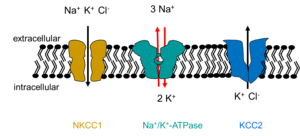
Team leader
Address
Research
Research activities
Functional characterization of deafness genes
Sound information processing requires proper formation and function of auditory structures. In this context, our research focuses on the characterization of genes with essential roles in development, maturation and maintenance of inner ear and auditory brainstem structures. By analyzing different transgenic mouse lines we were already able to show an important function of microRNA 96 and the microRNA processing enzyme Dicer, gamma-crystallin N as well as the L-type calcium channels Cav1.2 and Cav1.3 in the auditory brainstem.
Further projects in this field of research investigate the activity dependent development of inhibitory synapses and epigenetic changes in the brainstem of deaf mice as well as synapto- and neuropathies of the auditory nerve associated with different types of deafness.
Contact: Dr. Maike Claußen

Evolution of the auditory system
Three middle ear ossicles are a defining feature of mammals and their emergence from branchial arches are a textbook example of evolutionary processes. In addition to this unique middle ear structure, mammals display several other exclusive features such as high frequency hearing, an extremely positive endocochlear potential, and an exceptionally high number of auditory brainstem structures. Notably, the middle ear has evolved multiple times in vertebrates. Overall, the auditory system provides a unique setting to address key questions in evolution. We address these fundamental questions by characterizing the molecular mechanisms underlying evolutionary processes in the auditory system. For instance, comparative gene expression analysis revealed molecular differences in the secretory epithelium, which generates the endocochlear potential. Additionally, we focus on gene regulatory networks underlying the formation of auditory structures.
Contact: Dr. Maike Claußen


Functional, biochemical and molecular analyses of cation chloride cotransporters
Cation chloride cotransporters play an important role in transepithelial salt transport, osmoregulation, and synaptic inhibition. Their dysfunction results in various severe neurological disorders such as deafness, epilepsy, traumata and chronic pain. We are interested in molecular and cellular mechanisms regulating the activity of these transporters. We focus on KCC2 as its developmental activation is required for inhibitory action of the neurotransmitters GABA and glycine. To better understand activation of KCC2, we characterize the regulatory role of phosphorylation using site-directed mutagenesis, cell culture, and flux measurements. Another focus is the characterization of the operating mode of KCC2 using evolutionary based structure and function analyses.
Contact: PD Dr. Anna-Maria Hartmann


